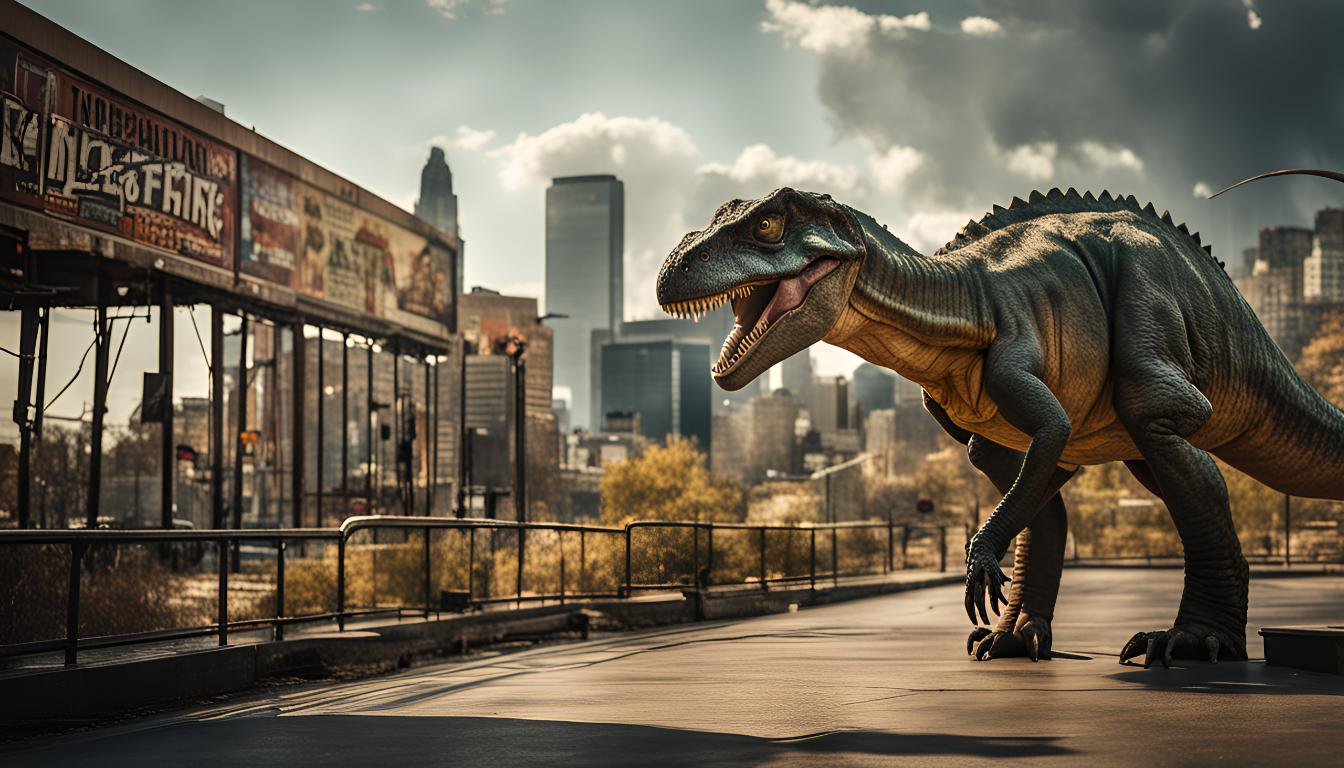Building upon our understanding of how music profoundly influences creative processes—from the jazz improvisations that fueled Fitzgerald’s storytelling to the modern artworks inspired by rhythmic patterns—the subtle forces of silence and ambient sounds play an equally vital role. While music often directs the emotional and cognitive rhythms of an artist, the quiet spaces and environmental sounds surrounding them set the stage for innovation. How Music Shapes Creativity from Fitzgerald to Modern Art offers a foundational perspective that we now expand to explore how silence and ambience act as catalysts and canvases for artistic inspiration.
1. Introduction: Extending the Dialogue Between Music and Visual Creativity
The influence of soundscapes extends beyond active musical engagement, permeating the creative environments where artists and writers find their muse. While melodies and rhythms invigorate the mind, the spaces of silence and ambient sounds foster a different kind of inspiration—one rooted in reflection, subconscious connection, and sensory subtlety. Historically, artists like Vincent van Gogh sought quiet, contemplative environments to cultivate their visual innovations, just as writers like Virginia Woolf utilized pauses and unspoken moments to deepen narrative resonance. Transitioning from the overt power of musical influence, we now delve into how the nuanced presence of silence and ambient sounds shapes the very fabric of artistic creation.
2. The Psychological Impact of Silence and Ambience on Creativity
a. How silence fosters reflection and internal visualization in artists and writers
Silence provides a fertile ground for introspection, allowing creators to clear mental clutter and access deeper layers of imagination. For example, composer John Cage famously integrated silence into his works, notably in his piece 4’33”, where the absence of deliberate sound prompts listeners to focus on ambient noises. Such pauses enable writers like Samuel Beckett to craft narratives with profound pauses that evoke introspection and emotional depth, illustrating how silence acts as a reflective space that nurtures internal visualization essential for innovative ideas.
b. The role of ambient sounds in triggering subconscious associations and ideas
Ambient sounds—such as rustling leaves, urban hums, or distant water—serve as subconscious cues that stimulate associative thinking. Studies in neuroaesthetics reveal that exposure to natural ambient environments enhances neural connectivity related to imagination and problem-solving. For instance, artists working outdoors in natural settings often report spontaneous bursts of creativity inspired by subtle environmental cues, which they incorporate into their work. These sounds act as external stimuli, unlocking hidden memories and ideas that might remain dormant in silence or structured musical environments.
c. Comparing active musical stimulation with passive ambient exposure in creative breakthroughs
While active music engagement—listening to compositions or playing instruments—can energize and direct creative energy, passive ambient exposure often facilitates a relaxed mental state conducive to spontaneous insights. Research indicates that passive environments with gentle ambient sounds promote alpha brainwave activity associated with relaxed alertness, ideal for creative ideation. For example, writers often find that working in quiet or with subtle background sounds fosters a flow state, unlocking ideas that might be obscured during highly stimulating musical sessions.
3. Silence as a Space for Innovation: Case Studies from Literature and Visual Arts
a. Writers who utilize pauses and silences in narrative to deepen thematic resonance
Literary giants like Franz Kafka and Ernest Hemingway masterfully employed pauses and silences within their prose to evoke tension and introspection. Hemingway’s sparse style, characterized by deliberate omissions, leaves space for reader interpretation and emotional engagement. Similarly, Kafka’s use of silence and pause in his narrative structure creates a sense of unresolved tension, inviting readers into the subconscious layers of his stories. These literary silences act as powerful tools for thematic depth and emotional resonance, illustrating how the deliberate absence of sound or dialogue can amplify creative expression.
b. Visual artists employing negative space and quiet atmospheres to evoke emotion
In visual arts, artists like Mark Rothko utilize fields of muted color and negative space to evoke profound emotional responses. Rothko’s large canvases often feature vast expanses of silence—visual and conceptual—that allow viewers to immerse themselves in contemplative silence. Similarly, Japanese Zen gardens employ simplicity and negative space to foster tranquility and reflection. These examples highlight how silence and empty space serve as active elements that deepen engagement and emotional impact, inspiring innovation through minimalism and subtlety.
c. Analysis of notable works where silence or ambient surroundings act as catalysts for innovation
The silent moments in film, such as the contemplative pauses in Andrei Tarkovsky’s works, catalyze emotional and philosophical breakthroughs. Similarly, the ambient soundscapes in the installations of Olafur Eliasson create immersive environments that inspire viewers and creators alike. These works demonstrate that silence and ambient surroundings are not mere backgrounds but active catalysts that prompt new interpretations and creative responses, emphasizing their integral role in the artistic process.
4. The Neuroscience of Ambient Sound and Silence in Creative States
a. Brain activity patterns during exposure to silence vs. musical stimuli
Neuroscientific research reveals that silence and ambient sounds activate different neural pathways compared to active musical stimuli. Functional MRI scans show increased activity in the default mode network during periods of silence, a state associated with introspection and creative incubation. Conversely, musical stimuli primarily stimulate the limbic system, fostering emotional arousal. Understanding these patterns helps in designing environments—such as quiet rooms or natural settings—that optimize neural states for innovation.
b. How ambient environments influence neural pathways associated with imagination
Ambient environments rich in natural sounds have been shown to enhance connectivity between brain regions involved in imagination and memory. Researchers have observed increased activity in the hippocampus and prefrontal cortex when individuals are immersed in natural soundscapes, facilitating divergent thinking. This neural enhancement underscores the importance of cultivating ambient environments that foster neural plasticity and creative thinking.
c. Implications for designing creative spaces that optimize the balance of sound and silence
Effective creative environments balance silence with ambient sounds, promoting relaxation and neural connectivity. Incorporating natural elements—such as water features, plants, or outdoor views—can help achieve this equilibrium. Additionally, adjustable soundscapes allow artists to tailor their surroundings to their workflow, maximizing inspiration and minimizing distractions. These insights inform the design of studios, libraries, and collaborative spaces dedicated to fostering innovation.
5. Ambient Soundscapes and Silence in the Creative Environment
a. The significance of physical surroundings—nature, urban soundscapes, quiet rooms—in inspiring art
Physical surroundings profoundly influence the creative process. Natural environments, with their harmonious ambient sounds, have been consistently linked to enhanced inspiration. For example, outdoor painters often cite the sounds of wind, water, and wildlife as integral to their creative flow. Conversely, urban soundscapes—when curated thoughtfully—can energize or inspire—think of the bustling city streets that fuel jazz improvisation or street art. Quiet rooms, free from distraction, serve as sanctuaries for deep focus, enabling artists to access their internal worlds without external interference.
b. Techniques artists use to incorporate ambient sounds intentionally into their workflow
Artists employ various techniques to harness ambient sounds intentionally—such as recording natural environments to incorporate into their compositions or visual pieces. Soundscaping tools and apps enable creators to craft personalized ambient backgrounds, fostering a conducive mental state. For example, ambient musicians like Brian Eno have designed sound environments that serve as creative backdrops, while visual artists might project subtle environmental recordings as part of their installations. These techniques demonstrate how ambient sounds can be curated to enhance focus, emotional depth, and inspiration.
c. The influence of ambient and silent environments on collaborative versus solitary creativity
Solitary creators often prefer quiet or specific ambient environments that allow deep internal focus. In contrast, collaborative spaces benefit from controlled ambient sounds that facilitate communication, shared inspiration, and collective flow. For instance, open studios with adjustable sound levels enable artists and musicians to switch seamlessly between individual reflection and group synergy. Recognizing how ambient environments differentially impact solitary and collaborative work helps in designing optimal spaces for diverse creative needs.
6. From Silence to Sound: A Dynamic Continuum in Artistic Inspiration
a. How moments of silence prepare the mind for spontaneous musical or visual creation
Silence acts as a mental reset, allowing artists to internalize previous stimuli and open space for spontaneous ideas. Musicians often experience these pauses as moments where improvisation flows naturally, while visual artists find that moments of quiet reflection lead to sudden flashes of inspiration. For example, jazz musicians frequently use silent pauses to listen inwardly before responding creatively, illustrating how silence primes the subconscious for innovation.
b. The cyclical relationship between ambient sounds and musical composition or visual experimentation
Ambient sounds often serve as a bridge between moments of silence and active creation, creating a cyclical flow. An artist might begin with ambient environmental recordings, then move into active composition or painting, only to return to ambient elements as part of the finished piece. This fluid interplay fosters a layered depth—where silence and sound continually inform each other, enriching the creative process and resulting work.
c. Case examples illustrating the seamless transition from silence to active artistic expression
In the works of composer Steve Reich, gradual shifts from silence to rhythmic patterns exemplify this continuum, where initial quiet phases set the stage for energetic musical development. Similarly, visual artist Agnes Martin’s subtle use of minimal lines and empty space creates a meditative environment that transitions into dynamic visual exploration. These examples highlight how moments of silence and ambient sounds are integral in guiding the artist’s journey from contemplation to active creation.
7. Bridging Back to the Parent Theme: How Silence and Ambience Complement Music’s Role in Creativity
a. Reintegrating the influence of music with the subtle power of silence and environment
While music undeniably energizes and structures creative processes, integrating silence and ambient sounds enriches this influence by providing space for reflection and subconscious engagement. Composers like Philip Glass often combine rhythmic repetition with pauses, creating layered textures that invite contemplation. This layered interplay demonstrates that true artistic innovation arises from a layered environment where sound, silence, and ambience coexist, each amplifying the other’s potential.
b. The layered interplay of sound, silence, and ambience in shaping artistic innovation
Understanding the synergy between these elements deepens our appreciation of creative processes. For instance, modern installations often juxtapose silent spaces with immersive ambient sounds, creating multisensory experiences that stimulate multiple neural pathways simultaneously. This layered approach fosters a richer, more nuanced form of artistic expression that resonates on emotional, cognitive, and subconscious levels.
c. Final reflections on how understanding these elements deepens our appreciation of creative processes from Fitzgerald to modern art
By exploring the subtle yet profound roles of silence and ambience, we gain a more comprehensive understanding of the creative journey—one that complements the energetic influence of music. Recognizing how these elements serve as silent partners in innovation allows us to appreciate the full spectrum of artistic inspiration, from the lyrical narratives of Fitzgerald to the immersive installations of contemporary artists. Ultimately, embracing the interplay of sound, silence, and environment enriches our capacity to create and interpret art in all its forms.




